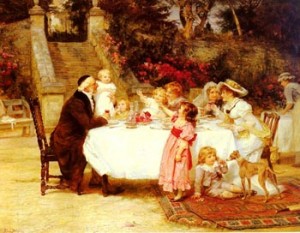 Many people ask what an organic society would look like. They want to know how and where people would live. They want concrete examples of neighborhoods and towns that embody the organic principles that are expounded in Return to Order.
Many people ask what an organic society would look like. They want to know how and where people would live. They want concrete examples of neighborhoods and towns that embody the organic principles that are expounded in Return to Order.
They would be surprised to learn that some of these principles are still alive and well in America, although not well known. There is a whole school of housing design called the New Urbanism that highlights the need for neighborhoods that integrate and unify society. While this school does not have the full vision found in organic Christian society, it does provide concrete examples of organic housing and shows how it can be inexpensive, profitable and delightful.
One of the main proponents of the movement is Andres Duany, an architect who has actually built such housing projects successfully. During a presentation in San Antonio, Texas (see video below), he shows slides of what an organic arrangement of housing would be like. He calls us back to our tradition, highlighting places like a Georgetown neighborhood in the nation’s capital which offers a wide range of housing options all within a several block area. These various options unify people of different income levels, and facilitate the lives of those who need to work in the area. This diversity creates a sense of place that makes a community like this a delightful place to live and walk around in.
Such a housing arrangement is contrary to the suburban development that tends to group people of a single income level into houses that all look the same. Duany claims such arrangements are repetitive, redundant and not conducive to creating a sense of community. People inside must travel outside to work. Workers outside must travel inside to service these developments.
Duany believes that a real community must present numerous options where all can mix, work and interact together. He even says that it is very important to have extremely wealthy people or elites living in towns and communities. Towns with such upper class figures have culture, Duany says. Towns without them, do not, they are “dead ends.” These leading families living inside a community have the time and means to endow their towns with parks, museums, and cultural institutions. They are important components to an organic community that makes a town livable.
 Perhaps the most important thing about this school of architecture is that it shows that physically building an organic Christian society is possible. Architects like Duany, who has designed 300 projects based on organic principles, are proof that it can be done profitably. But that is only part of the solution.
Perhaps the most important thing about this school of architecture is that it shows that physically building an organic Christian society is possible. Architects like Duany, who has designed 300 projects based on organic principles, are proof that it can be done profitably. But that is only part of the solution.
As critics of the New Urbanism point out, it is one thing to build a physical site, it is quite another to form a community. The human element of relationships is essential for an organic neighborhood. Without this element, such development risk becoming artificial reproductions of the real thing. Much more important is the development of Catholic souls that are the inspiration for this housing. Souls imbued with the right principles yearn for an organic Christian order. When these souls arise, the buildings come almost as a natural consequence.


